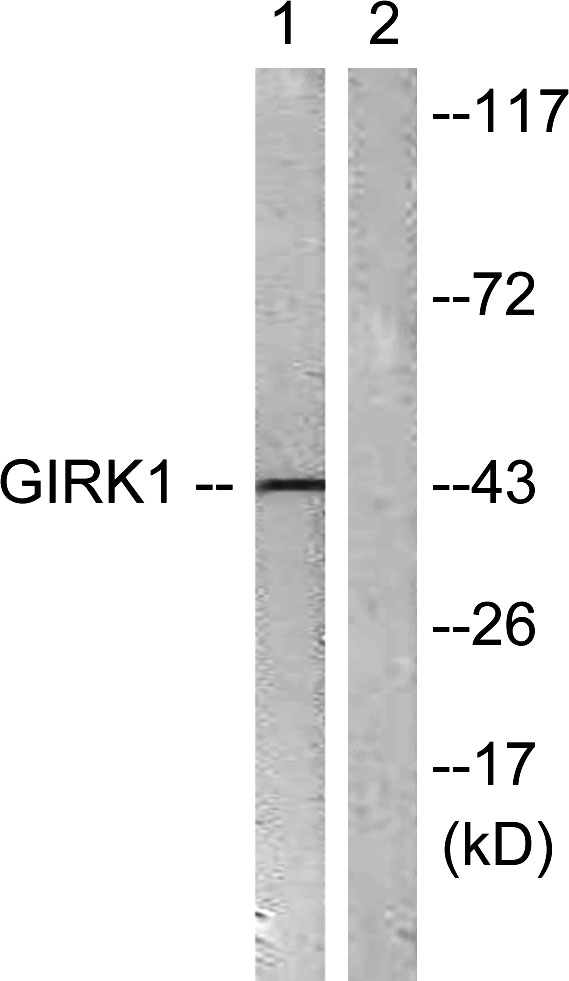产品名称
KIR3.1 Rabbit Polyclonal Antibody
别名
KCNJ3; GIRK1; G protein-activated inward rectifier potassium channel 1; GIRK-1; Inward rectifier K(+) channel Kir3.1; Potassium channel; inwardly rectifying subfamily J member 3
蛋白名称
G protein-activated inward rectifier potassium channel 1
存储缓冲液
Liquid in PBS containing 50% glycerol, 0.5% BSA and 0.02% New type preservative N.
Human Gene Link
http://www.ncbi.nlm.nih.gov/sites/entrez?db=gene&term=3760
Human Swissprot No.
P48549
Human Swissprot Link
http://www.uniprot.org/uniprotkb/P48549/entry
Mouse Gene Link
http://www.ncbi.nlm.nih.gov/sites/entrez?db=gene&term=16519
Mouse Swissprot No.
P63250
Mouse Swissprot Link
http://www.uniprot.org/uniprot/P63250
Rat Gene Link
http://www.ncbi.nlm.nih.gov/sites/entrez?db=gene&term=50599
Rat Swissprot Link
http://www.uniprot.org/uniprot/P63251
免疫原
The antiserum was produced against synthesized peptide derived from human GIRK1/KIR3.1/KCNJ3. AA range:151-200
特异性
KIR3.1 Polyclonal Antibody detects endogenous levels of KIR3.1 protein.
稀释度
WB 1:500-2000;IHC-p 1:50-300
宿主
Polyclonal, Rabbit,IgG
背景介绍
Potassium channels are present in most mammalian cells, where they participate in a wide range of physiologic responses. The protein encoded by this gene is an integral membrane protein and inward-rectifier type potassium channel. The encoded protein, which has a greater tendency to allow potassium to flow into a cell rather than out of a cell, is controlled by G-proteins and plays an important role in regulating heartbeat. It associates with three other G-protein-activated potassium channels to form a heteromultimeric pore-forming complex that also couples to neurotransmitter receptors in the brain and whereby channel activation can inhibit action potential firing by hyperpolarizing the plasma membrane. These multimeric G-protein-gated inwardly-rectifying potassium (GIRK) channels may play a role in the pathophysiology of epilepsy, addiction, Down's syndrome, at
细胞定位
Membrane; Multi-pass membrane protein.
功能
function:This potassium channel is controlled by G proteins. Inward rectifier potassium channels are characterized by a greater tendency to allow potassium to flow into the cell rather than out of it. Their voltage dependence is regulated by the concentration of extracellular potassium; as external potassium is raised, the voltage range of the channel opening shifts to more positive voltages. The inward rectification is mainly due to the blockage of outward current by internal magnesium. This receptor plays a crucial role in regulating the heartbeat.,similarity:Belongs to the inward rectifier-type potassium channel family.,subunit:Associates with GIRK2, GIRK3 or GIRK4 to form a G-protein activated heteromultimer pore-forming unit. The resulting inward current is much larger.,
纯化
The antibody was affinity-purified from rabbit antiserum by affinity-chromatography using epitope-specific immunogen.



